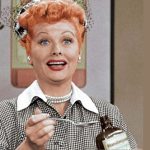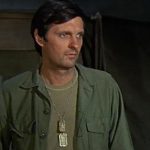 Technology
Technology  Technology
Technology  Humans
Humans 10 Everyday Human Behaviors That Are Actually Survival Instincts
 Animals
Animals 10 Animals That Humiliated and Harmed Historical Leaders
 History
History 10 Most Influential Protests in Modern History
 Creepy
Creepy 10 More Representations of Death from Myth, Legend, and Folktale
 Technology
Technology 10 Scientific Breakthroughs of 2025 That’ll Change Everything
 Our World
Our World 10 Ways Icelandic Culture Makes Other Countries Look Boring
 Misconceptions
Misconceptions 10 Common Misconceptions About the Victorian Era
 Mysteries
Mysteries 10 Strange Unexplained Mysteries of 2025
 Miscellaneous
Miscellaneous 10 of History’s Most Bell-Ringing Finishing Moves
 Technology
Technology Top 10 Everyday Tech Buzzwords That Hide a Darker Past
 Humans
Humans 10 Everyday Human Behaviors That Are Actually Survival Instincts
 Animals
Animals 10 Animals That Humiliated and Harmed Historical Leaders
Who's Behind Listverse?

Jamie Frater
Head Editor
Jamie founded Listverse due to an insatiable desire to share fascinating, obscure, and bizarre facts. He has been a guest speaker on numerous national radio and television stations and is a five time published author.
More About Us History
History 10 Most Influential Protests in Modern History
 Creepy
Creepy 10 More Representations of Death from Myth, Legend, and Folktale
 Technology
Technology 10 Scientific Breakthroughs of 2025 That’ll Change Everything
 Our World
Our World 10 Ways Icelandic Culture Makes Other Countries Look Boring
 Misconceptions
Misconceptions 10 Common Misconceptions About the Victorian Era
 Mysteries
Mysteries 10 Strange Unexplained Mysteries of 2025
 Miscellaneous
Miscellaneous 10 of History’s Most Bell-Ringing Finishing Moves
Top 10 TV Theme Songs from the 1980s
New national cable networks such as MTV, HBO, and CNN began to take market share away from America’s big three networks (ABC, CBS, and NBC) in the 1980s. Investors complicated things by creating a fourth network—Fox. This meant the beginning of the end of the major networks’ decades-long dominance over American culture.
In addition, videotapes, video games, and remote controls meant consumers were no longer locked into watching one TV channel at any given time. Instead, they could tape shows for later viewing, play games, or channel surf during commercials. Networks were forced to adapt by creating compelling new comedies and dramas, including prime-time soap operas.
These technological changes affected choices in TV theme songs. Writers were urged to create even more catchy lyrics and tunes. Production values had to equal those in the recording industry. Fortunately, for the big networks, a large cadre of experienced composers, lyricists, musicians, and singers was available to create award-winning theme songs, the kind that would make a channel surfer pause and listen.
The best theme songs encompassed the essence of the show and its characters. They made the viewer feel good. So here are the 10 best TV theme songs from the 1980s.
Related: Top 10 Incredible Songs Based On Books
10 Dynasty: 1981–1989
This prime-time soap opera, introduced by CBS after Dallas became a worldwide smash hit, involved the complicated interactions between two feuding families in Denver, the Carringtons and the Colbys. Like Dallas, oil wealth and the political power it financed were involved. Producer Aaron Spelling made sure glamour abounded, and suspense ensued in Dynasty as members of the two families vied for power and influence.
Viewers loved watching the wife and ex-wife of Blake Carrington fight, sometimes physically. Alexis, the ex-wife, became known as the female J.R. Ewing. By 1985, up to 60 million Americans were watching each week. Composer Bill Conti wrote “Dynasty” for the show. The song featured horns holding triumphant notes in a fanfare motif as if greeting viewers while they entered an emperor’s palace. Which, in a way, they were. The song moved up to number 52 on Billboard in 1982.[1]
9 Magnum P.I.: 1980–1988
Magnum, P.I. starred Tom Selleck as a laid-back detective wearing shorts, a Hawaiian shirt, and a Detroit Tigers baseball cap while sleuthing. He lived as a house guest at a famous mystery writer’s lush Hawaiian estate. Viewers never saw Robin Masters; they only heard his voice, the voice of Orson Welles.
Thomas Magnum solved cases with the traditional private eye’s humor and action. Magnum was clearly having a wonderful time, except when he had to deal with the annoying by-the-book British Major Higgins, played by John Hillerman, who ran the estate. Magnum made occasional references to Detective Steve McGarrett of Hawaii Five-O. The show was also set in the same universe as Murder, She Wrote.” Jessica Fletcher cleared Magnum when he was accused of murder in one episode.
“Magnum, P.I.,” the song, was composed by Mike Post, the creator of theme songs for Quantum Leap, Law & Order, and The A-Team, among many others. The jaunty tune promised an hour of adventure during the opening scene, which included sharply edited visuals of a helicopter, a Ferrari 308, Magnum engaging in daring-do, explosions, gunplay, and snapshots of his co-stars. The lively song reached number 25 on the Billboard charts in 1982.[]
8 Miami Vice: 1984–1989
When you think of the 1980s, you think of Miami Vice, a show with its own fashion flare (clothing was created by Italian designers) and sound. Music was ubiquitous. Series co-creator Anthony Yerkovich defined the concept as “MTV Cops.” He knew about such things. He was a producer of Hill Street Blues.
Don Johnson played Crockett, and Philip Michael Thomas played Tubbs, a pair of Miami-Dade County cops who tackled the drug trade in the South Beach district. High-speed boat chase scenes were often featured in the harbor. The cops also patrolled Ocean Drive. Miami’s old art deco hotels provided eye candy for the viewers. When Don Johnson was introduced to Don Shula, head coach of the Miami Dolphins, as Don Johnson of Miami Vice, the coach said, “Glad to meetcha. You guys do a real good job.” The coach thought Johnson was a real cop.
The pilot episode did not feature the theme song. Instead, Miami was introduced to the viewers in a long montage sequence accompanied by Phil Collins’ hit song, “In the Air Tonight.” The hard-driving instrumental theme, composed and performed by Jan Hammer, opened all other episodes with visuals of Miami, its people, and action shots from the show. This song became so popular it reached number 1 on Billboard in 1985. No instrumental would do the same for decades. The song received two Grammys.[3]
7 A Different World: 1987–1993
A Different World was spun off from The Cosby Show. A character from that show, Denise Huxtable (Lisa Bonet), daughter of Heathcliff Huxtable (Cosby), was sent to her parent’s alma mater, Hillman College, a fictional version of real-life historically black colleges. Her encounters with fellow students and teachers provided the comedy and drama.
Producer and director Debbie Allen, herself a graduate of a historically black college—Howard University—ensured authenticity on the show by taking the writing staff to black colleges in Atlanta. This background allowed them to feature the hottest campus topics on the show.
The theme song was written by Bill Cosby, Stu Gardner, and Dawnn Lewis (who played Jaleesa on the show), and its Season 1 version was sung by Phoebe Snow. Aretha Franklin turned “It’s a different world than where you come from” into hard-hitting soul music for Seasons 2-5. Boyz II Men and Terrence Forsythe then lightened it up for Season 6.[4]
6 Hill Street Blues: 1981–1987
Viewers were never sure which city Hill Street Blues took place in, but they didn’t care. Handheld cameras, multiple-episode story arcs, and large ensemble casts with interesting characters engaging in realistic police work engrossed viewers. Creator Steven Bochco deliberately left things vague, selecting surroundings that resembled portions of Chicago, Pittsburgh, and Buffalo, New York.
The Maxwell Street precinct station in Chicago served as the exterior for Hill Street. The show received 8 Emmys in 1981. It earned so much money for NBC with its high ratings that Hill Street Blues became the first weekly TV show to receive $1 million for a single episode.
Mike Post took a mere two hours to write this beautiful, mellow instrumental. Three police cars speed out of the station as the song begins. Post wanted to add more orchestration. Bochco wanted it to remain bare-bones piano. They compromised with a few horns as background to the piano. It worked. The song jumped to number 10 on Billboard in 1981 and received a Grammy.[5]
5 Seinfeld: 1989–1998
As a comedian rising in popularity in the late 1980s, Jerry Seinfeld was presented with an opportunity to create a show with NBC. Seinfeld turned into the saga of the real-life stand-up comic and his New York friends. It was supposedly a show about nothing but was always hinting about being more than mere ordinary life. Most of the goings-on took place in an apartment building in Manhattan’s Upper West Side.
Seinfeld complained to his real-life buddy, who happened to be named George, about the music that was being planned for his show. George connected him with his own buddy, Jonathan Wolff. Seinfeld told Wolff about the peculiar circumstances a composer would need to deal with in Seinfeld.
Each episode would open with Seinfeld at the mic telling jokes to the crowd. The music would have to be timed to go with the jokes and the applause. Wolff’s solution was simple. He would use a slap bass, some horns, and finger snaps—very little actual music—to work around Seinfeld’s voice, laughter, and applause. Essentially, each episode began with a subtly or wildly different song.[6]
4 Night Court: 1984–1992
Night Court focused on the employees of a Manhattan municipal court and the accused appearing before Judge Harry T. Stone (played by Harry Anderson) during the night shift. The judge was a laid-back kind of guy who did magic tricks to ease tension during defendant appearances. Show creator Reinhold Weege came up with the concept when he sat in on real night court sessions in New York.
There were some truly crazy people in the courtroom, not all of them accused of crimes. Weege selected Anderson for the lead role when he saw his magic act on episodes of Cheers. Weege’s other trick was to name hookers and pimps after his real-life friends. He said that’s how he could say hello to them on TV.
Each character is introduced during the bass-heavy theme song. Jack Elliot composed it. He was best known as a composer for Barney Miller and Charlie’s Angels. Ernie Watts, a noted Motown saxophonist who also performed with the Tonight Show Orchestra, played the melody. [7]
3 The Golden Girls: 1985–1992
Everyone of a certain age knows about The Golden Girls. It’s the story of four older women holding onto their friendships despite friction generated by living closely together in a comfortable home in Miami. The characters were played by major movie and TV stars: Beatrice Arthur, Betty White, Rue McClanahan, and Estelle Getty.
The show was hugely popular, garnering several Golden Globes. Each star received an Emmy. In fact, the late Queen Mother loved the show so much that she requested a live show be put on for her. The cast and crew gathered to play a secret live version at the London Palladium in 1988.
“Thank You for Being a Friend,” the show’s theme song, was written and sung by Andrew Gold in 1978 on his album All This and Heaven Too. It took him about an hour to write. Cynthia Fee covered it for The Golden Girls.[8]
2 Amen: 1986–1991
Amen is the story of Ernest Frye, a pompous, scheming deacon played by Sherman Hemsley (who earlier played George Jefferson), and his clashes with a new minister at the First Community Church of Philadelphia. Frye contrives many harebrained schemes for the church. Thelma, his daughter, is intrigued by Reuben Gregory, the new minister. Despite Frye’s protests, the two get married in Season 4.
The theme song for Amen was “Shine on Me,” a rousing gospel tune written by Andrae Crouch, a real-life gospel singer and composer. Vanessa Bell Armstrong, an established gospel singer and Grammy nominee, was chosen to sing the lead along with a gospel choir. Exterior shots featured the Mount Pisgah African Methodist Episcopal Church in Philadelphia. We see Frye arrive and enter that church during the credits.[9]
1 Cheers: 1983–1992
You want to go where everyone knows your name, a place where locals can drink and socialize. This concept, taken from the theme song, is what Cheers is all about. The owner and bartender of Cheers was former relief pitcher Sam Malone. Server Diane, waitress Carla, old baseball man Coach, know-it-all Cliff, and accountant Norm filled out the cast.
The show was created by James Burrows and Glen and Les Charles, with the Tracy-Hepburn love-hate relationship of Sam and Diane placed at the center of most episodes. “She is uptown; he is downtown.” The superb writing and acting garnered Cheers 77 awards, including 6 Golden Globes and 28 Emmys.
Gary Portnoy and Judy Hart Angelo offered two songs that were swiftly rejected by the producers. They persevered, creating the perfect fitting, unforgettable third offering, “Where Everybody Knows Your Name.” Portnoy performed the song himself, starting off accompanied only by a piano. A drum, guitar, and bass joined in as Portnoy overdubbed his voice, creating a virtual chorus for the refrain. Such a simple song, but one that would go on to become one of the most famous TV theme songs of all time.[10]








